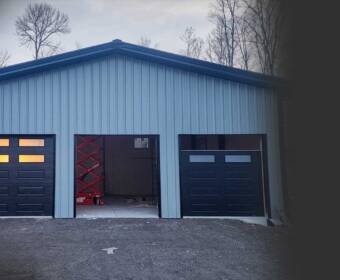Introduction
Agriculture buildings play a crucial role in the success and efficiency of farming operations. As the backbone of agricultural enterprises, these structures provide essential support for a wide range of activities, including crop production, livestock management, and equipment storage. With advancements in design and construction, modern agriculture buildings are not only functional but also environmentally friendly and adaptable to the evolving needs of farmers.
The Importance of Agriculture Buildings
Agriculture buildings are vital for protecting crops, livestock, and equipment from adverse weather conditions and environmental factors. These structures serve multiple purposes, such as housing livestock, storing feed and machinery, and facilitating processing operations. By providing a controlled environment, agriculture buildings help enhance productivity and improve the overall efficiency of farming operations.
In today’s competitive agricultural landscape, having the right buildings is more important than ever. Farmers must maximize their resources while ensuring the safety and well-being of their livestock and crops. Agriculture buildings contribute significantly to achieving these goals.
Types of Agriculture Buildings
There are various types of agriculture buildings tailored to meet the specific needs of farmers. Each type serves a unique purpose and can be customized based on the requirements of the farming operation. Common types of agriculture buildings include:
- Barns: Traditional barns provide shelter for livestock and storage for feed and equipment. They can be designed for various livestock, including cattle, sheep, and horses.
- Greenhouses: These structures create an optimal environment for growing plants and vegetables year-round. Greenhouses allow farmers to extend their growing season and protect delicate crops from harsh weather.
- Storage Facilities: Proper storage buildings are essential for keeping equipment, tools, and harvested crops safe and organized. These facilities help maintain the quality of produce and ensure that machinery is ready for use.
- Processing Plants: For farmers who produce value-added products, processing plants are essential. These buildings allow for the efficient processing, packaging, and distribution of agricultural products.
Modern Design and Construction Techniques
Advancements in design and construction techniques have revolutionized agriculture buildings. Modern structures often incorporate energy-efficient materials and sustainable practices, reducing the environmental impact of farming operations. Features such as insulated panels, natural lighting, and ventilation systems enhance energy efficiency and create a comfortable environment for both livestock and workers.
Additionally, modular and prefabricated construction methods enable faster building times and reduced labor costs. These techniques allow farmers to expand their operations more efficiently while maintaining high-quality standards.
Customization for Diverse Needs
One of the significant benefits of modern agriculture buildings is their customization options. Farmers can work with builders to create structures tailored to their specific needs. Whether it’s a barn designed for a specific breed of livestock or a greenhouse optimized for a particular crop, customization ensures that the building functions effectively for its intended purpose.
By investing in customized agriculture buildings, farmers can enhance productivity, streamline operations, and improve the overall efficiency of their agricultural practices. This adaptability is vital in meeting the challenges of an ever-changing agricultural landscape.
Enhancing Sustainability
Sustainability is a growing concern in agriculture, and modern buildings can significantly contribute to environmentally friendly practices. Incorporating renewable energy sources, such as solar panels, and implementing efficient water management systems can reduce a farm’s carbon footprint.
Agriculture buildings serve a multitude of purposes that are vital to successful farming. They protect crops from the elements, provide shelter for livestock, and house essential equipment. Without these structures, farming operations would struggle to maintain productivity and ensure the safety of both crops and animals.
Sustainable agriculture buildings also focus on resource conservation, minimizing waste, and promoting biodiversity. By designing structures with sustainability in mind, farmers can improve their operations while positively impacting the environment.
Ensuring Compliance and Safety
Agriculture buildings must comply with various regulations and safety standards. Proper construction and design can help ensure that the structures meet local building codes and agricultural regulations. This compliance is essential for protecting the well-being of livestock and workers while safeguarding the overall integrity of the farming operation.
Farmers should assess their operations to determine the types of buildings that would best suit their needs. Additionally, considering future growth and changes in agricultural practices will allow for a more strategic investment in infrastructure.
Investing in high-quality agriculture buildings not only ensures compliance but also enhances the safety of everyone involved in the farming process. From proper ventilation to appropriate storage solutions, attention to detail in building design can prevent accidents and promote a healthier working environment.
Conclusion
Agriculture buildings are indispensable for the success of modern farming operations. With their ability to protect crops and livestock, enhance productivity, and support sustainable practices, these structures play a vital role in the agricultural industry. As farming continues to evolve, investing in high-quality, customized agriculture buildings will ensure that farmers can meet the demands of today and tomorrow.
If you’re considering expanding your agricultural operation or building new structures, explore the options available in agriculture buildings. With the right design and construction, you can create spaces that not only support your farming activities but also promote a sustainable and productive future. Embrace the potential of modern agriculture buildings and elevate your farming operation to new heights. for blog to visit our site todaybloggingworld.
